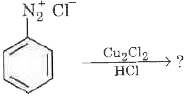(a) Give the compounds from which isobutanoic acid (A)(Me2CHCOOH) can be prepared in a better way also describe the method.
(b) Convert 1-chlorobutane (A) to valeric acid (B).
( c) Convert benzene to adipic acid.
(d) Complete the following reactions.
(i) 
(ii)  .
.
(a) Proceed reverse :
(i) (−COOH) can be obtained either by the oxidation of (−CHO) group or by (CH2OH) group.
(ii) (−COOH) can be obtained by the oxidative cleavage of (C=C) bond or (C≡C) bond.
(iii) (−COOH) can be obtained by the haloform reaction of ⎛⎜
⎜⎝Me−O∣∣C−⎞⎟
⎟⎠ group.
The compounds are :
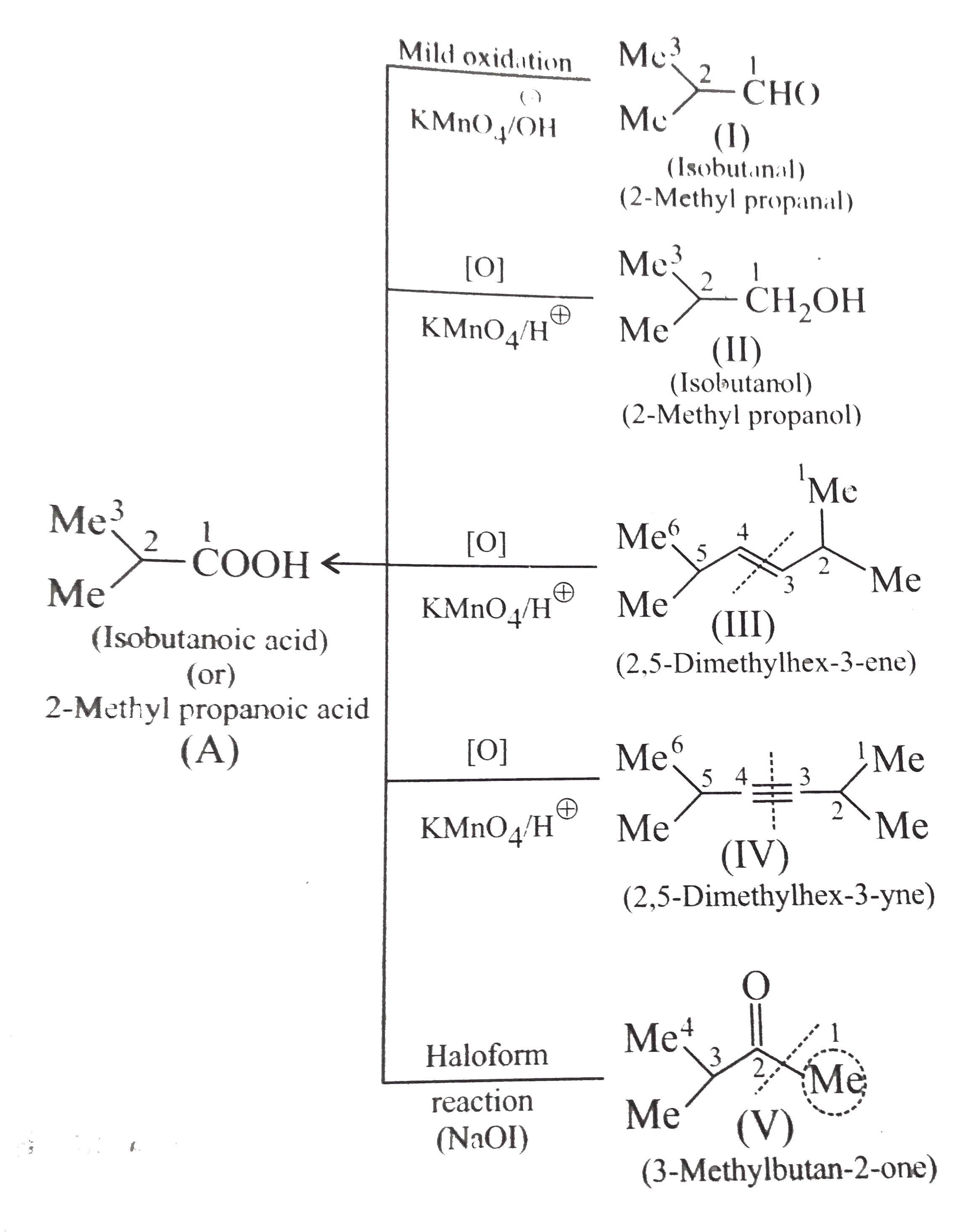
(b) Since in the conversion of (A) to (B), there is an increase of an C atom, thus step-up method can be obtained (i) from Grignard reagent and (ii) ny nitrile method.
(i) From Grignard reagent :
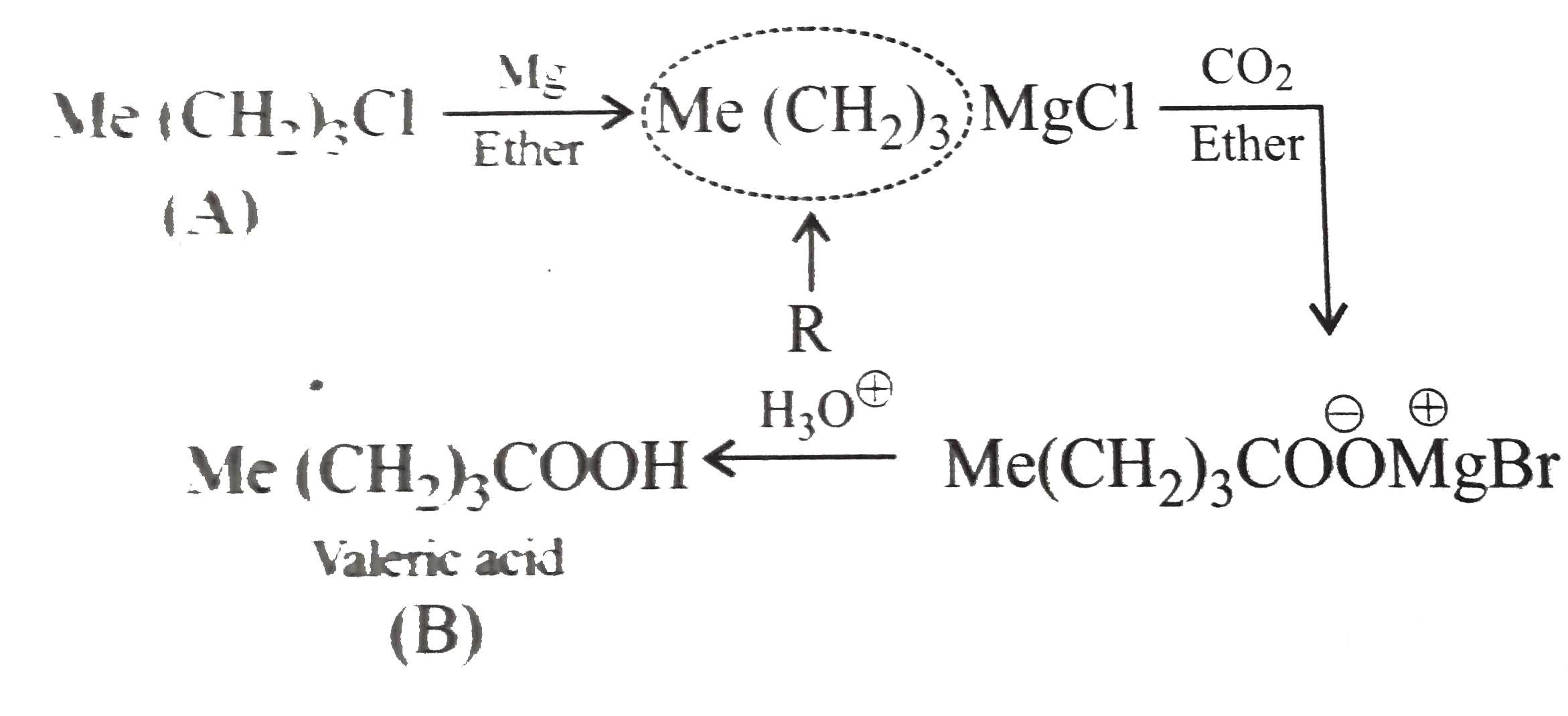
(ii) By nitrile method :
(A)CNӨ−−→Me(CH2)3CNH3O⊕−−−→Me(CH2)3COOH+⊕NH4
( c) Adipic acid is a dibasic acid of six C atoms, and benzene also has six C atoms. So, first conversion to cyclohexene and then oxidation of (C=C) would give adipic acid.
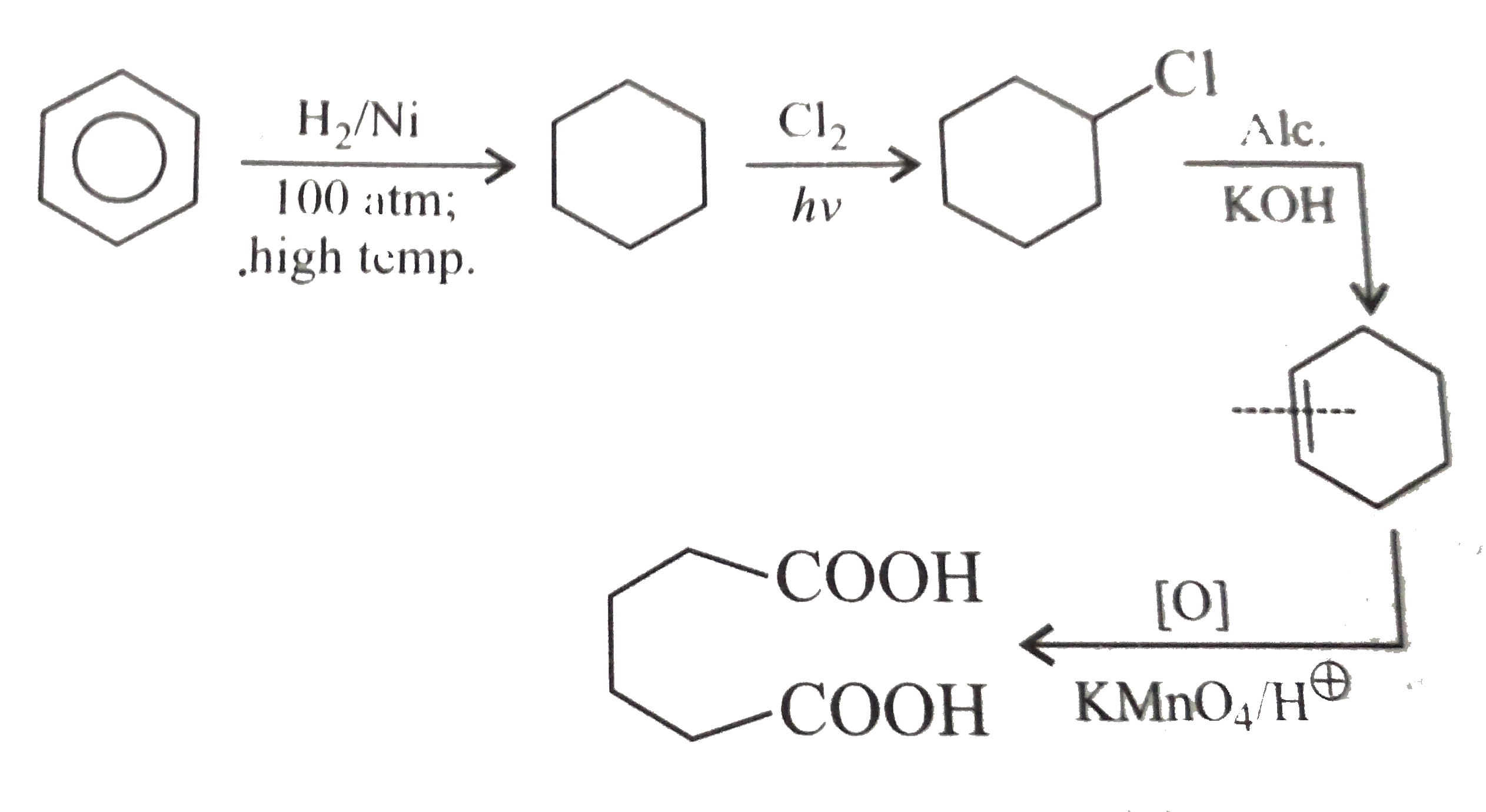
(d) (i) 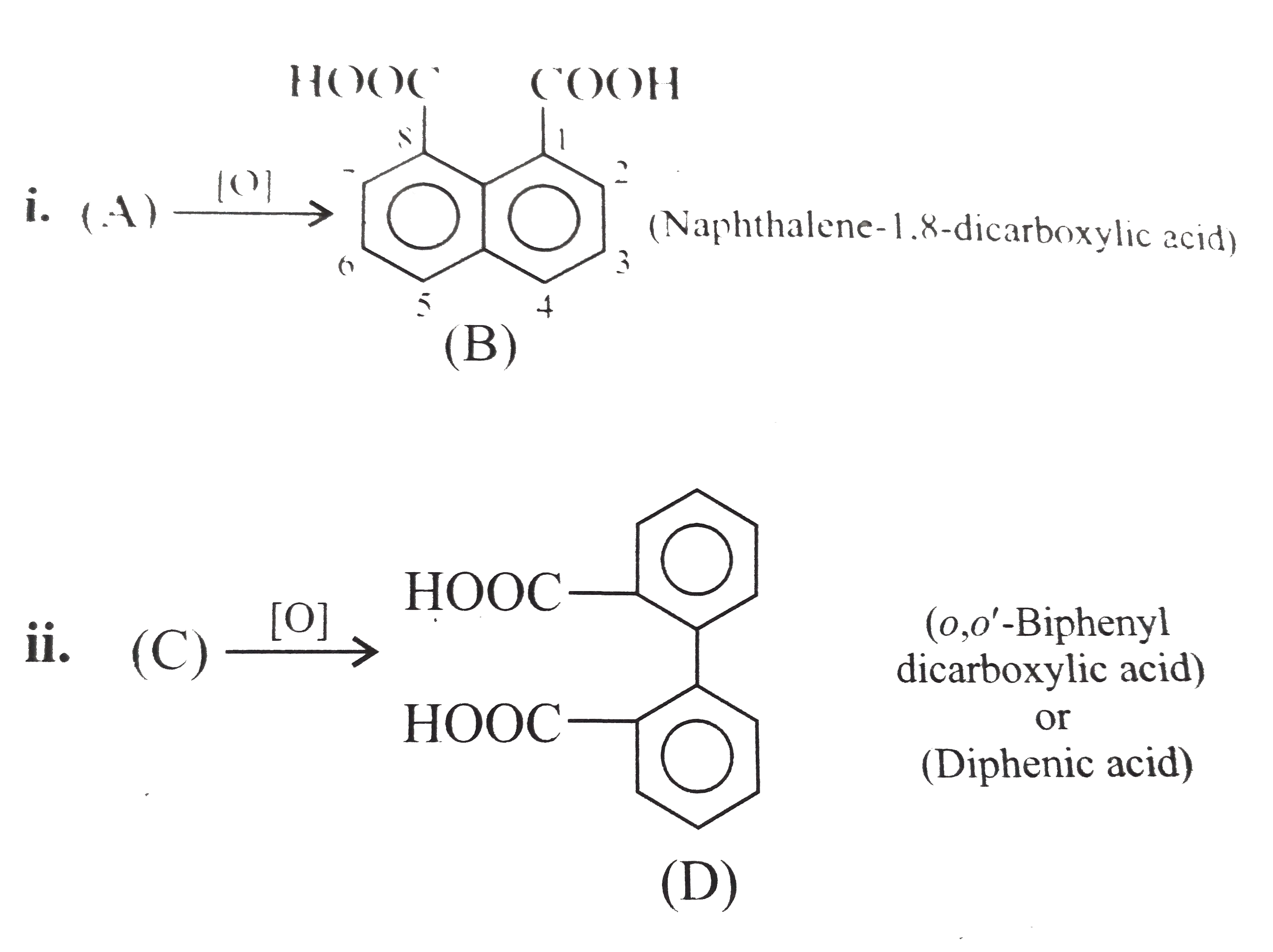
Topper's Solved these Questions
- CARBOXYLIC ACIDS AND THEIR DERIVATIVESBOOK - CENGAGE CHEMISTRYCHAPTER - CARBOXYLIC ACIDS AND THEIR DERIVATIVESEXERCISE - Solved Examples
17 Videos
- CARBOXYLIC ACIDS AND THEIR DERIVATIVESBOOK - CENGAGE CHEMISTRYCHAPTER - CARBOXYLIC ACIDS AND THEIR DERIVATIVESEXERCISE - Exercises (Subjective)
19 Videos
- BIOMOLECULES, POLYMERS AND CHEMISTRY IN EVERYDAY LIFEBOOK - CENGAGE CHEMISTRYCHAPTER - BIOMOLECULES, POLYMERS AND CHEMISTRY IN EVERYDAY LIFEEXERCISE - QUESTION BANK
8 Videos
- CHEMICAL KINETICSBOOK - CENGAGE CHEMISTRYCHAPTER - CHEMICAL KINETICSEXERCISE - Archives Subjective
23 Videos
Similar Questions
Knowledge Check
3−Phenol propanic acid (B) can be prepared by both nitrile and carbonation method as shown.

Path I gives a good yield of (B).
ӨCN initiates elimination reaction.AIf both (A) are (R) are true and (R) is the correct explanation of (A).BIf both (A) and (R) are true but (R) is not the correct explanation of (A).CIf (A) is true but (R) is false.DIf (A) is false but (R) is true.
Which metal is used to convert methyl alcohol to acetic acid
(A) Cs
(B) Rh
(C) Ni
(D) Pt
View Solution(a) Draw the structure of the following compounds:
(i) Ethanoic acid
(ii) Butanone.
(b) why is conversion of ethanol to ethanoic acid considered an oxidation reaction?
View Solution(a) How will you bring about the following conversions :
(i) Toluene to benzaldehyde
(ii) Ethanenitrile to ethanoic acid
(B) Identify A, B, C and D in the following reactions :'
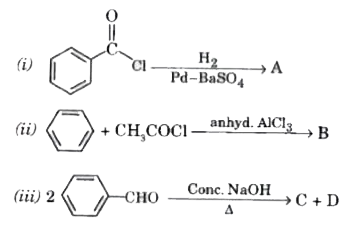
View SolutionCompound (A), C8H6NOBr, is optically active. Reduction of (A) gives (B) which reacts with nitrouos acid to form (C), dihydric alcohol. Benzene sulphonyl chloride reacts with (B) to give a product soluble in NaOH. Hydrolysis of (A) gives (D) which is an optically active acid. (A) does not give any precipitate with aqueous AgNO3 . Controlled oxidation of (A) gives monobromo benzoic acid. Compound (A) on reaction with Br2/Fe gives only one compound. Identify (A), (B), (C), and (D).
View SolutionWhich of the following is not true for Potassium dichromate in acidic medium?
(A) it convert lodide ion into lodine
(B) it convert ferrous ion into ferric ion
(C) it convert oxalate ion into carbon dioxide
(D) it convert Sulphite ion into Sulphur
View SolutionShow how each of the following compounds can be converted to benzoic acid.
(i) Ethylbenzene
(ii) Acetophenone
(iii) Bromobenzene
(iv) Phenylethene (Styrene)
View Solution(a) Give chemical tests to distinguish between the following compounds (One test in each case) :
(i) Aniline and ethyl amine. (ii) Methyl amine and dimethyl amine.
(b) How will you convert aniline to sulphanilic acid ?
View Solution

